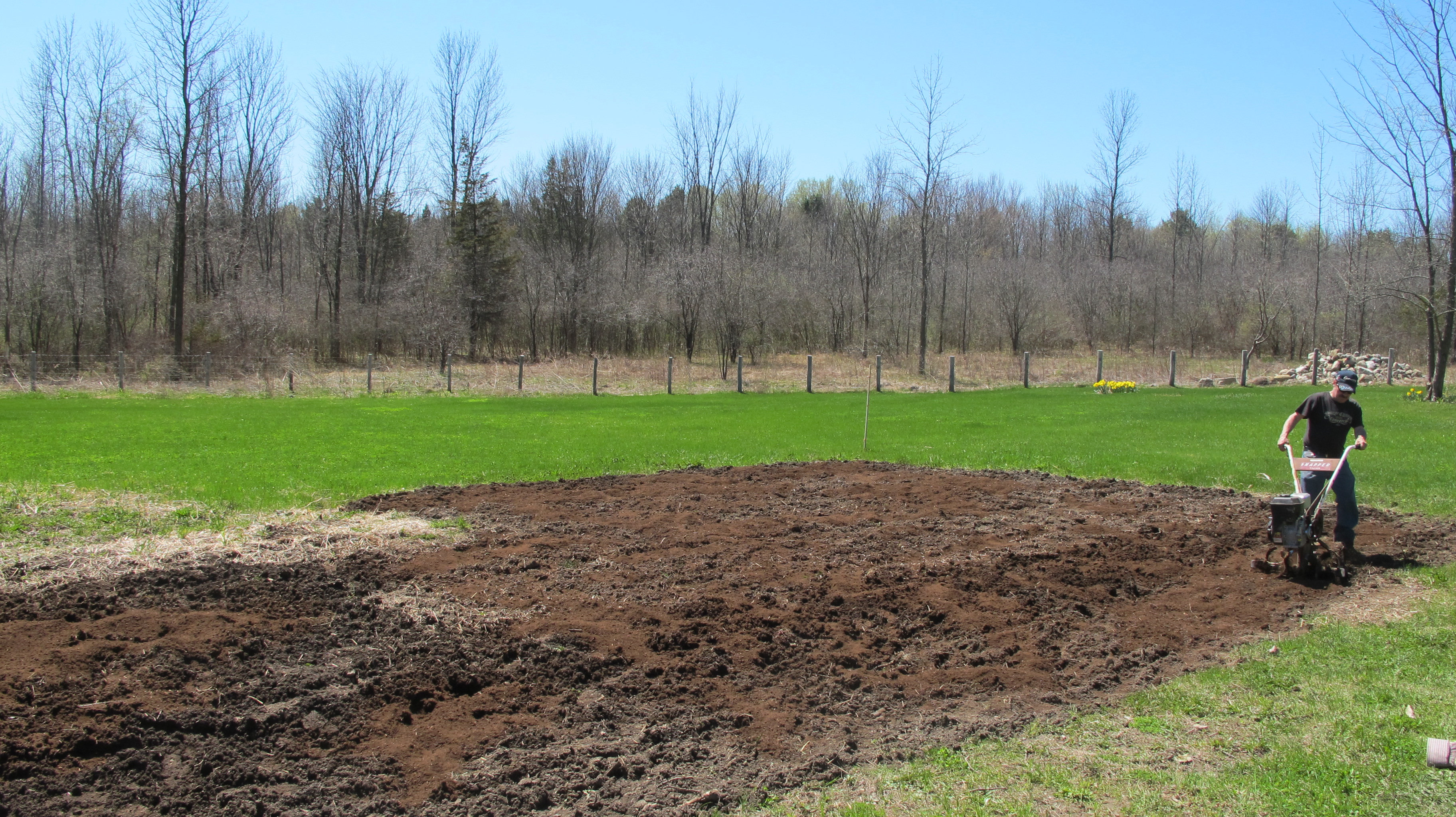[youtube=http://www.youtube.com/watch?v=-mQqE7yNGkA&w=600&rel=0]
After the rainiest spring/summer in years, the summer of 2012 appears to be one of the driest, and Rosslyn gardens have mostly profited. Time for an update on our mid-July veggies, plus an important question about squash blossoms at the end.
Lake Champlain water levels are plummeting (waterfront/dock/boating update soon) and lawns are either crispy, crunchy or perpetually showered by sprinklers. With the exception of new grass we’re starting as part of ongoing repairs to the damaged waterfront, we’re trying to minimize our environmental impact by letting the lawns dry up but drip, drip, dripping the vegetables, herbs and orchard.

It’s a curious twist of fate that we were just beginning to repair our waterfront from flood damage at this point last year, and this year we’re experiencing a sustained drought. But we’re taking advantage of the heat for lots of Lake Champlain watersports and Adirondack Coast bike rides. Life is good!
What about that mid-July veggies update I promised?
So far, the drought winners in the vegetable garden appear to be the zuchini and yellow squash (Are they are channeling their “inner tropics”?!?!), Imperial Star Artichokes, eggplant, peppers and tomatoes. Although I keep expecting the watermelons and cantaloupes to explode, they’ve been sluggish. Bizarre. Many years our seasons are too short for them, and yet when we blast them with dry heat day after day, they get logy. Why?
The leeks are also struggling. I suspect they need even more water than they are getting… Will try to keep them wetter this week. The pumpkins and cucumbers are also way behind where they’d normally be at this point in the summer. I’d hoped to trellis the cukes this year. Never done that before, but intrigued by the smaller plot and self-shade possibilities as well as the opportunity to keep the cucumbers up off the earth so they’ll be less vulnerable to pests. Unfortunately the plants are still so small I haven’t been able to train any of them up onto the cedar trellises yet. Soon, I hope!

The good news is that we’ve been devouring radishes (see French Breakfast Radish) and greens for over a month. Already finished with the first radish and lettuce patches and making good headway through the second patches. Will plant more lettuce this week along with beans and another squash crop. No more radishes. I think I’ve already hit my limit.
Why so much squash? Yes, we too get sick of squash, but each year I plan to harvest and prepare squash blossoms. But so far it’s never happened. This year I’ve vowed to learn several good ways to prepare squash blossoms. I have some interesting recipes, but would love to hear your favorite way to prepare squash blossoms. And I need to figure out the best way to clean the squash blossoms before cooking. Seems that ants in particular love to get inside. How do you prepare your squash blossoms?
Thanks to Sacha Marcucci for her tasty sounding recommendation:
@virtualDavis one of our favorite restaurants stuffs them with ricotta, then lightly batters and frys (fries?sp.) them. delish.
— sacha marcucci (@sachamarcucci) July 15, 2012












